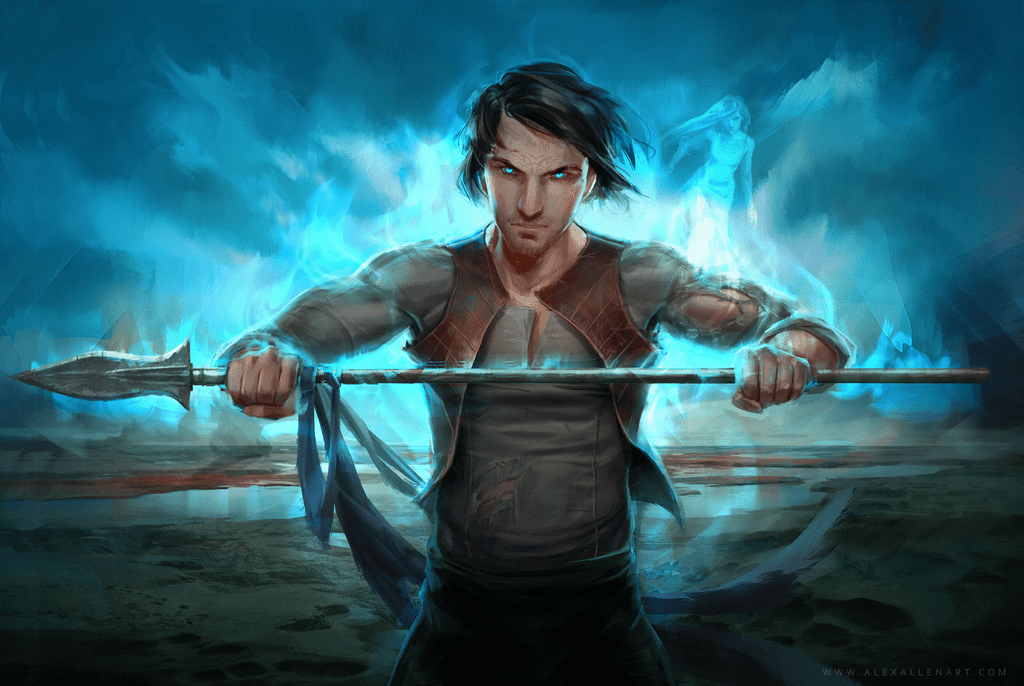By William Schroeder, LPC
In reading Brandon Sanderson’s Stormlight Archive series, I found myself struck by how well Sanderson understood mental health concerns – trauma in particular. Sanderson’s series features a variety of characters who struggle with mental health conditions but so much of it is linked to the mind and body’s response to PTSD and trauma. Despite their struggles, many of these characters manage to overcome their challenges, demonstrating resilience and personal growth throughout the series. As a mental health therapist, I was really struck by Sanderson’s research and dedication to building a true understanding of the challenges that trauma can create for people.
So, how fantasy can help us understand trauma is by walking us through the journey of a characters experience of trauma. There are some that are more aware of their trauma and others that have blocked it out entirely until it starts surfacing later in their lives. Here are a few examples of characters who exhibit signs of trauma and other linked mental health conditions and how they overcome them:
- Kaladin: Kaladin, a former soldier turned slave, suffers from depression and PTSD. He experiences recurring nightmares and struggles with feelings of guilt and worthlessness. Through his journey, he learns to confront his trauma and accept help from others, ultimately finding a sense of purpose and hope. Having worked with a number of first responders over the years, the story arc of Kaladin is very believable and relatable to their experience. He presents as a character that feels cursed by his experience and thus a need to save everyone no matter what it costs him personally. This drives his character into some dark places, including being suicidal and multiple junctures. His struggles also lead him to look for the good in others as he attempts to lead bridge four and help others rebuild. Through much of the series, he is much better at helping others than he is helping himself. Luckily in today’s world we have things like EMDR to help people who have been exposed to traumatic situations but I can’t help but feel touched by Kal’s struggle and the role that Sil places in his life bringing him light and hope during his dark times – and helping each other to grow and evolve.
- Shallan: Shallan, a young scholar and artist, experiences dissociative identity disorder as a result of traumatic experiences in her childhood. She develops alternate personalities as a coping mechanism, but ultimately learns to integrate them and confront her past, allowing her to move forward and grow. Dissociation, or more simply put, disconnecting from traumatic experiences, is incredibly common in our society and it’s a way that our brain and body helps us to work through PTSD. Sanderson masterfully illustrates that challenge of getting all of those “parts” to come to the “dissociative table” and begin working together towards needed change. Shallan also displays an ability early in the books to capture the good in others and can inspire them to change – initially with her drawings. As a therapist, I think about this same dynamic of reflecting back to someone what I hear they want to be – and could be. Positive reflection is a powerful tool towards change.
- Dalinar: Dalinar, a high-ranking military leader, struggles with alcohol addiction and experiences flashbacks of traumatic events from his past which haunts him. He tried desperately to avoid his past. Through the support of others, he confronts his past and works towards healing and sobriety. The journey of Dalinar is similar to Kaladin in terms of PTSD but his coping mechanism was substance use for many years and it almost destroys him.
- Szeth: Szeth, an assassin, seems to suffer from obsessive-compulsive disorder (OCD) like symptoms and experiences intrusive thoughts that drive him to obey his master’s orders (they also have his oath stone). Through self-reflection and the help of others, he begins to question his beliefs and actions, ultimately breaking free from his destructive cycle. In therapy, we would utilize ERP, or exposure response prevention, which is essentially a bit of what Szeth is thrown into as his world is made to turn upside down.
There are many other examples too like Moash (who goes a dark direction), Teft, and Rock. Brandon Sanderson’s characters struggles and triumphs are woven throughout the series, showing that mental health conditions are complex and deeply personal experiences that can be overcome with the right support and resources. It’s easy to argue that the greatest strength of the characters in the series is how much stronger they get from their struggle. It’s humbling, painful at times, and yet an important part of their story arch and growth. The Stormlight Archive serves as a powerful example of how fiction can be used to explore and destigmatize mental health, while also providing hope and inspiration to readers who may be struggling with similar challenges.
Image credit: https://www.deviantart.com/soyabeansoldier/art/Kaladin-646085769


Recent Comments